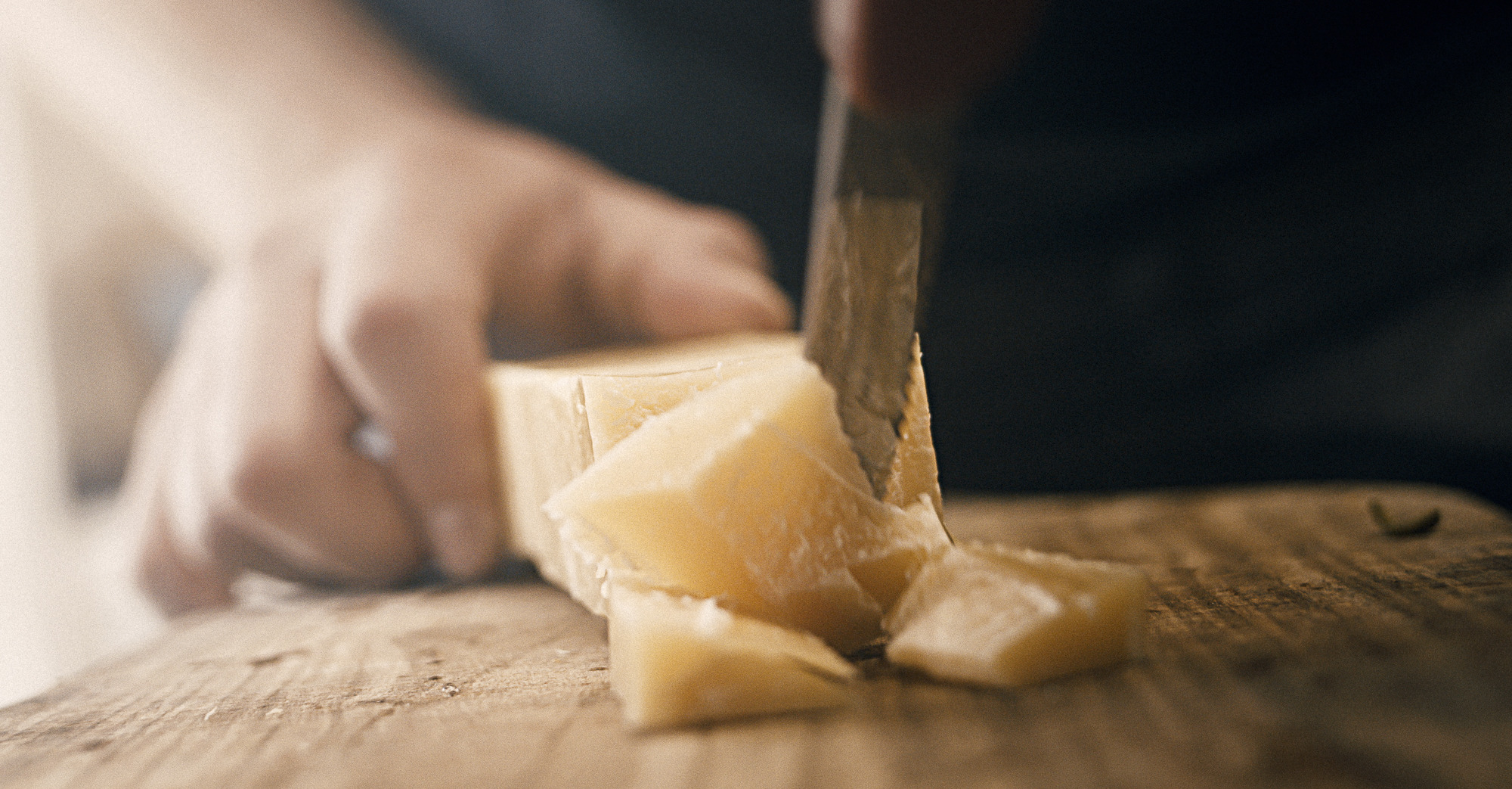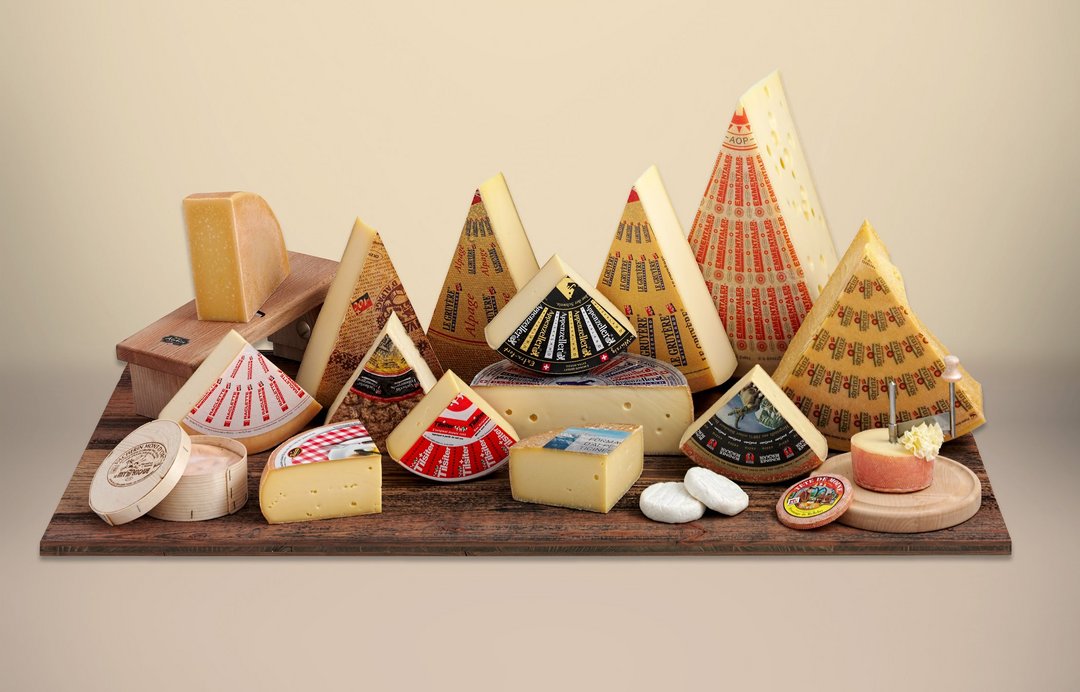When it comes to sandwiches or a bite of cheese as a snack, it really doesn’t matter what the cheese that you cut looks like – the main thing is that it tastes good! But what about when you want to create an attractive cheese platter for your guests to mark a special occasion? Or perhaps you want to grate some cheese? Here you can find the correct tools and the techniques you need.

The soft-cheese knife
There are a whole range of soft-cheese knives. The most important thing is that the blade is thin, so that as little cheese as possible sticks to it. Knives with large holes in the blade are also well-suited. Make sure you use a different knife for different types of blue cheese, so the cheese isn’t infected with foreign fungi. Knives with different coloured handles can help you distinguish between them.

The girolle cheese curler
A “girolle” can be used to create beautiful curls of Tête de Moine AOP. You don’t need to remove the rind from the outside of the cheese. Don’t press too hard when rotating the curler to ensure you get good curls.

The Sbrinz chisel
Extra-hard cheeses like Sbrinz AOP are best presented in the form of “Möckli” or chunks. For this you need a special hard-cheese chisel to cut off pieces of cheese from the block.

The wire cheese slicer (raclette slicer)
You can use a wire cheese slicer to cut slides of raclette directly from the block of cheese. With a little practice, it is possible to cut full-length slices of equal thickness. The trick is to always hold the wire cheese slicer at the same angle to the cheese.

The cheese lyre
Blue-cheese cutters are often called lyres. They can be used to cut blue cheeses and other soft cheese varieties into beautifully precise pieces.

The cheese slicer
A cheese slicer is used to slice extra-hard or hard cheese (especially alpine cheese). Ensure that the slicer is securely installed and cannot slip. It is important to precisely position the blade. The aim is to slice extremely thin slices that you can roll up immediately without them breaking.

The double-handle knife
The double-handle knife is often used to chop entire blocks of semi-hard cheese in half; but it can also be used to cut wedges of cheese. It is largely professionals who work with this type of blade.

The mezzaluna knife
Mezzaluna knives are ideal for cutting hard cheese and semi-hard cheese. Although the handle is generally intended to be used with one hand, use both hands to cut cheese. Place the blade at an angle and apply pressure with the support of your body weight to cut the cheese.

What is the best way to grate cheese?
If you want to grate semi-hard cheese, the best thing to do is to place the cheese in the freezer briefly beforehand: after just 30 minutes the cheese will have a consistency that is far easier to work with. You can use a coarse grater – the most important thing to note is that you should only grate in one direction, otherwise the holes of the grater become smeared in cheese.
Sbrinz AOP is ideal for finely grated cheese, for example. You can get cheese graters with and without containers, and manual and electric versions. The advantage of rotary cheese graters that hold the cheese in the centre and use a crank handle to grate the cheese is that all parts of the cheese are used, even small pieces that break off. The disadvantage: you can only use small and medium-sized pieces of cheese.

